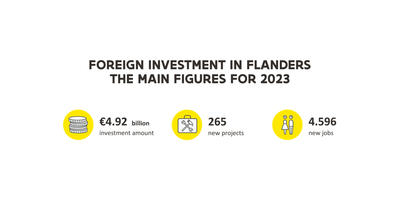
Antwerp Space helps ESA look for life on Jupiter’s moons

600-million-km journey
The aim is for the unmanned space probe to reach the planet Jupiter by July 2031 following a 600-million-kilometer journey. Scientists consider three of the gas giant’s moons (Callisto, Europa and Ganymede) potentially suitable environments for the emergence of life. Beneath Jupiter’s ice-covered moons are large, liquid oceans. Around the volcanic activity in those oceans, traces of life may be found, past or present.
In addition, ESA wants the Juice mission to help map how our solar system was formed. The exploration will last until 2034, after which the goal is to put Juice into orbit around Ganymede, the only moon in our solar system with its own magnetic field. There, the satellite will be brought to controlled destruction in 2035.
Communication system from Flanders
Over 2,000 people from 83 companies in 23 countries are involved in the Juice mission. For one crucial component, the communication system, the Flanders-based space company Antwerp Space was called in. “We were recommended by Airbus, with whom we work regularly. Airbus had won the contract to build the Juice satellite for ESA,” comments Koen Puimège, the CEO of Antwerp Space.
Juice is equipped with a dozen advanced measurement instruments, such as cameras and radar systems. “The data collected by these instruments will be transmitted via our communication system,” Puimège explains. “For that, our engineers developed the electronics, a few 100 kilograms of material. The system works in both directions, as astronomers can also use it to give commands to the satellite.”
Optimally protected from radiation
Juice is a 6-ton behemoth, on which 85 square meters of solar panels are mounted. There is not enough fuel for the satellite to travel the entire distance to Jupiter. Therefore, ESA makes use of the gravity pendulum technique. By flying Juice past the gravitational field of Earth, our moon and the planet Venus several times, the satellite can build up speed to then be catapulted to Jupiter.
“This launch method and the immense distance that needs to be covered are the principal challenges,” says Puimège. “The satellite encounters a lot of radiation in space, which can affect high-frequency and sensitive radio and communications equipment. That’s why we started developing and extensively testing all the equipment, from transponders to antennas and amplifiers, three years prior to launch.”
Financing growth
It’s with this communication equipment that Antwerp Space – whose main customers are ESA and the European Commission – generates most of its turnover. According to the latest available financial statements (2021), the company’s annual turnover comes in at around EUR 11 million, with a net profit of some EUR 49,000. “We immediately use our profits to finance our growth,” Puimège concludes.


